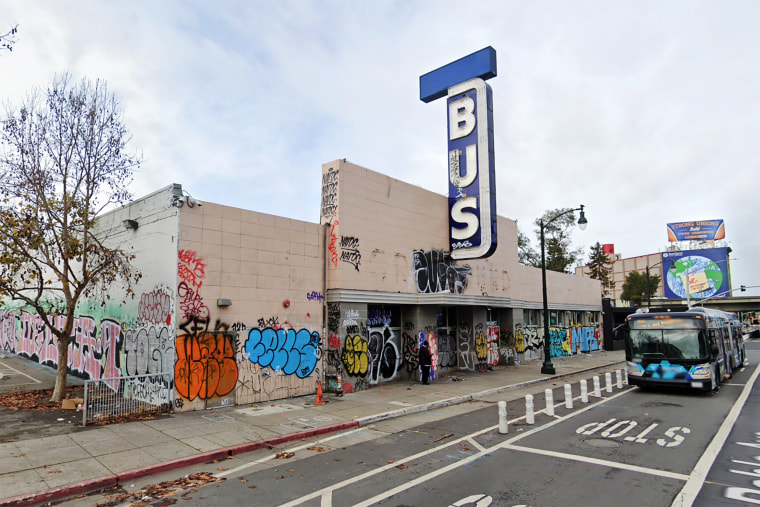Intercity buses will bring thousands of people home for the Thanksgiving holiday, as they always do. But this year’s travelers can’t be blamed if they aren’t overflowing with gratitude about their experience at the bus stop.
The past few months have been tough for many passengers using bus stations and curbside spots across the country. Amid a worsening bus station crisis, some city officials have become downright hostile to the key service because of perceptions that it causes theft, loitering and loss of neighborhood aesthetics. While dozens of airport terminal improvements are providing new conveniences for flyers, and as new federal dollars flow for train upgrades, more and more riders of intercity buses are, quite literally, being left out in the cold.
While dozens of airport terminal improvements are providing new conveniences for flyers, more and more riders of intercity buses are, quite literally, being left out in the cold.
The problem has been several years in the making. On Greyhound, the bus travel giant that reaches more U.S. cities than any other line, stations with spacious and climate-controlled waiting rooms have been shuttered in Charlottesville, Virginia, Cincinnati and Columbus, Ohio; Erie and Philadelphia, Pennsylvania; Knoxville, Tennessee; Louisville, Kentucky; Portland, Oregon, and Tampa, Florida. This has forced lines to move to curbside spots or more remote locations separated from downtown. Greyhound and its partners have suspended service entirely from two state capitals, Jackson, Mississippi, and Little Rock, Arkansas, because of their inability to find workable stations. Concern is high that Greyhound stations in Chicago; Charlotte, North Carolina; Cleveland; Dallas, and Kansas City, Missouri, could be the next to go.
This crisis is unfolding as intercity bus lines more broadly seem to be enjoying a post-pandemic bounce. FlixBus, Greyhound, Jefferson Lines, Megabus, Peter Pan, Trailways and other lines are adding back service, overcoming driver and mechanic shortages, and benefiting from sky-high airfares. More people ride intercity buses than trains, but the lack of high-quality station arrangements raises questions about the mode’s future opportunities.
Three factors are at the root of the crisis. Many municipal governments, once allies, have adopted aggressive not-in-my-backyard stances toward intercity buses, fueled by the perception that bus stations may be unsafe places that generate criminal activity.
Adding to this problem, dozens of stations came into the fold of a private real-estate holding company after Greyhound was sold to FlixMobility, the parent company of FlixBus, in 2021. FlixMobility did not acquire most of its privately owned stations as part of the transaction. Greyhound’s previous owner then sold many stations to a real-estate holding company, which has put numerous stations up for sale. Some aging stations were built during the glory years of bus travel and are now too expensive to maintain, given present-day traffic levels.
Meanwhile, many City Halls appear indifferent, highlighting the lack of clout bus travelers have in policymaking. A recent study by the Chaddick Institute (which I direct) found that two-thirds of Chicago intercity bus riders have annual household incomes less than $40,000, while more than one-third have incomes less than $20,000. More than a quarter have no other viable transportation options, with about 3 in 10 indicating that they would not have made the trip if bus service had not been available, often because they do not have a car. Our research suggests that without bus service, many people, including people with disabilities, may be unable to travel outside their metropolitan region.
Another problem is that most intercity bus lines are privately run and do not have strong political connections. Many bus riders are, by their nature, out-of-towners, which makes their concerns of little interest to local officials.
Common sense dictates that intercity bus lines start using public transit terminals with around-the-clock security, restrooms and indoor waiting areas. The federal government has made giving intercity bus lines “reasonable access” to these facilities a funding requirement. Such integration works well in Las Vegas and other spots. But Washington didn’t set limits on the fees that governments can change and some, according to those in the industry I’ve interviewed, have demanded princely sums, often in the form of extraordinary rents or mandates for additional security that cost more than all the local ticket revenue generated. Some officials justify their demands out of a desire to refrain from subsidizing a private business.
Fortunately, there is a better way. In Atlanta, an attractive Greyhound station with a food stand, spacious restrooms and a digital departure board opened earlier this year with state government support. In Boston, Denver, Los Angeles, Milwaukee and Washington, D.C., my analysis shows, train stations have been supplemented with intercity bus platforms. Miami has integrated local bus service into its international airport, and New York is rebuilding and expanding the massive Port Authority Bus Terminal near Times Square.
As the crisis escalates, connecting points are being lost.
But that is a small consolidation for those in the hundreds of other communities in which stations have been lost or downgraded. As the crisis escalates, connecting points are being lost. According to industry officials I’ve interviewed, bus lines are no longer selling tickets involving transfers in some cities because of the need for passengers to wait outside, exposed to the elements. This reduces the ability of passengers, including immigrants traveling from the border region, to travel efficiently between points served by bus lines. More bus trips are now excruciatingly long and arduous.
Bus lines are working to resolve these problems and educate travelers about the absence of amenities in certain cities. But they need help from public agencies and the political establishment to ensure that disadvantaged groups and disabled populations aren’t left behind. Thanksgiving weekend, with its inevitable crush of travelers, is the perfect time to shine a spotlight on a problem millions of Americans already know about — but the affluent and powerful would rather ignore.
